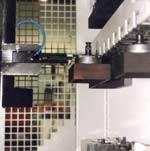Globally Integrated Machining
To serve global customers, this company manufactures plastic injection molds on a global basis. It does this not by outsourcing to overseas shops but rather by partnering with the right ones. The key is consistency from mold to mold, continent to continent.
Share







Hwacheon Machinery America, Inc.
Featured Content
View More


The most remarkable aspect of The Tech Group’s “super cell” is not that it is on the way to becoming one of the most automated and technically advanced mold insert production systems in the world, but that the super cell is being replicated by the company’s partners overseas.
This is one of the developments that gives this company in Scottsdale, Arizona, a global capability crucial to winning the mold business of its customers, many of which have production plants around the world. To implement this strategy, The Tech Group and its overseas counterparts have had to make radical changes to both the philosophy and the process of mold production. By seeking maximum automation, the entire organization has shifted from a reliance on custom mold making conducted by individual master craftspeople to an insistence on standardized mold manufacturing coordinated by an engineering-driven team. Standardization, in turn, has imposed some innovative but exacting disciplines such as the unique use of a palletized tooling ball that helps guarantee consistency regardless of where the work is being performed.
The effort is far from over. The Tech Group is still grappling with strenuous challenges—some cultural and some technical. Workforces on two sides of an ocean are undergoing training on an almost daily basis. Technical issues remain to be addressed, especially in the area of total hardware and software integration. All of these challenges resolve into one big issue: Getting used to profound but constant change.
A Super Cell Here, A Super Cell There
The original super cell is taking shape in the company’s Customer Engineering Center at its headquarters in Scottsdale. The super cell features several robotic sub cells on either side of a central aisle. One sub cell, for example, consists of two ram (sinker) electrical discharge machines (EDMs) served by a robot and carousel. A similar sub cell consists of two machining centers for high speed milling of graphite and steel. This sub cell is also equipped with a robot and carousel. A robotic grinding cell is also in operation.
Eventually, the super cell will consist of eight robotically tended sub cells—four on each side of the aisle. When completed, the super cell will include ram and wire EDM, hard milling, five-axis milling, surface grinding, jig grinding, ID/OD grinding, turning with subspindle and live tooling, laser engraving and inspection on a coordinate measuring machine. A master robot with its own carousel will move up and down the central aisle, transferring work from sub cell to sub cell. A covered trench and other utilities are already in place for this installation. This master robot will be the most innovative aspect of the super cell.
“Raw material in. Finished inserts out.” That’s how Len Graham describes the ultimate vision for the super cell. “Total automation is the goal,” he says. Mr. Graham is director of tooling engineering at The Tech Group and is the mastermind behind the super cell’s design and construction. Completion of the super cell is 2 or 3 years away.
In the meantime, a similar super cell is being constructed by The Tech Group’s manufacturing partner in Singapore. Although this super cell will not be an exact replica of its prototype in Scottsdale, it will have virtually the same capability. Several robotic sub cells are now in full operation in Singapore, including a wire EDM sub cell. (The wire EDMs in the Scottsdale super cell are currently awaiting their robot and carousel.)
Additional mold production capability is being developed at The Tech Group’s newest manufacturing partner, Chi Wo Plastic Molds Factory, Ltd. in Zhongshan, China. This plant will not have a super cell at first, but it will focus instead on mass-producing standard mold components for inventory stocking at The Tech Group’s other facilities.
The third super cell is being planned for a site in Europe, probably at a partnering mold shop near the company’s molding facility in Ireland.
The super cell concept that Mr. Graham is pioneering in Scottsdale and Singapore is based on a simple principle: The utmost in automation provides the fastest throughput, highest quality, greatest consistency and lowest price. “When you achieve that level of automation, it doesn’t matter where the super cell is located,” Mr. Graham says. “You can compete with anybody on quality, delivery and price.”
So why partner with mold producers in Asia? Why duplicate super cells in Singapore or Europe? As top managers at The Tech Group would put it, it’s a strategic necessity.
The Global Imperative
Bill Gerard, who oversees Len Graham’s tooling group as vice president of engineering at The Tech Group, explains: “The Tech Group started out in 1967 as a tool builder for plastic injection molding. Our specialty became complex molds for high production applications, especially in two areas: consumer goods and electronics on one side and pharmaceutical/health care products on the other.”
In the last decade, these areas have been dominated by multi-national companies serving markets on a global basis, Mr. Gerard says. “They tend to run production in multiple locations to reach key markets around the world. The plastic parts molded on one continent have to be interchangeable with parts molded on another continent. These companies want mold tooling with inserts that are just as interchangeable, regardless of which continent they are coming from or going to.”
At the same time, he says, stiff worldwide competition puts constant pressure on these companies to reduce costs and hasten new product introductions. So they look for tool builders who can give them short lead times, competitive pricing and high precision. According to Mr. Gerard, only a small percentage of mold builders can produce the high quality, fully interchangeable, medium- to high-cavitation molds in this category, especially in applications where these molds have to operate at relatively high speeds, producing high volumes and requiring low maintenance.
Mr. Gerard sums it up: “That’s the niche we want to fill—to attract and retain worldwide customers who require tooling of that nature.” To be the preferred supplier for these customers, The Tech Group has to have mold production capability wherever it makes the most sense. “Right now, that’s in the U.S. and Asia, but especially in Asia because that’s the fastest growing market for plastic injection molds,” Mr. Gerard says.
By achieving consistency from cavity to cavity, insert to insert, mold to mold, continent to continent, The Tech Group saw an opportunity to distinguish itself from other mold shops in this arena, even as the company kept pace with the trend of shorter lead times and more competitive pricing.
About 5 years ago, The Tech Group became determined to move in this direction.
The Automation Mandate
To Mr. Graham, as director of tooling engineering, this strategy implied a two-pronged approach. “We had to become highly automated, and we had to become highly automated on a global level,” he says. To achieve this goal, a radical transformation of the entire mold production process would be in order. Although the concept of the super cell has become the centerpiece of this approach as Mr. Graham envisioned it, more than the machining of inserts had to be automated. Moreover, the company would have to figure out how to develop an overseas partner willing and able to make the same transformation.
Automation, Mr. Graham explains, is the key to increased throughput—doing more work in less time without adding people. Increased throughput, in turn, means shorter delivery times and lower cost, two of the top customer requirements. However, automation requires standardization—doing things the same way over and over again rather than doing each thing in a unique or special way. At the time The Tech Group began its shift, a fair number of mold shops were catching on to the value of automation, particularly for inserts in multi-cavity molds. Mr. Graham’s previous experience at another mold shop included the installation of several robotic cells for automating EDM, so he had seen the possibilities and benefits firsthand.
Mr. Graham, though, recognized that this level of automation was only a good start for what The Tech Group had in mind. He believed that a much higher and much wider level of automation was called for. On one front, the company began analyzing the mold building process from start to finish. It identified what activities could be standardized, streamlined and automated as well as determined to what degree.
Meanwhile, on another front, it developed a relationship with Omni Mold Ltd, a well-established mold shop in Singapore. As partners, the Customer Engineering Center in Scottsdale and Omni Mold could move forward together. Generally, new process ideas were first tried out, refined and documented in Scottsdale, then implemented promptly in Singapore to keep both organizations closely on par. The company also decided at that time that mold design and engineering had to stay centralized, remaining largely the domain of the Customer Engineering Center.
What emerged over the next several years Mr. Graham characterizes as “Precision, Modular, Automated, Global Manufacturing.” In this transition, according to Mr. Graham, almost everyone involved had to take on a new role, learn new skills and adapt to a new understanding of what the company was trying to accomplish. “Managing the cultural changes imposed by the shift to automation required a great deal of energy, a process which is still going on,” he says.
Essentially, the shop had to move from a philosophy of mold building to a philosophy of mold manufacturing. “Traditional mold building relies on the skill and expertise of the moldmaker, but that model clashes with the high degree of standardization required by automation,” Mr. Graham says.
“What we’ve done is turn our master moldmakers into mold designers, machine programmers and project managers. That means shifting emphasis to capturing the expertise of the maker in the design phase,” Mr. Graham continues.
Mr. Gerard concurs. “Although design accounts for only 3 percent of a project’s cost, it determines 90 percent of the cost of production,” he says.
The shift from mold making to mold manufacturing also means “machining to the numbers,” as Mr. Gerard puts it. All tolerances are determined in the design phase, for example, and then it’s up to the planning teams and programmers to make sure that the shop floor hits those numbers. Reliance on numbers takes the guesswork out of mold production and reduces inconsistency. It provides an objective standard for every operation in the process.
“We’re moving from the art of mold making to the science of mold manufacturing,” says Mr. Graham. Mr. Gerard puts it another way: “Mold manufacturing has to be engineering driven.”
Choose Partners With Care
Establishing a philosophy of engineering-driven mold manufacturing rather than mold making opened up the possibility that The Tech Group could find overseas partners, who by adopting the same philosophy, could achieve a comparable level of favorable pricing, short lead times, high quality and consistency. Mold manufacturing could be split globally to expedite delivery schedules, to balance workloads, and provide customers with a regional presence for mold maintenance and support. Multiple sets of mold tooling could be manufactured for worldwide customer locations. Capacity would be expanded.
When evaluating potential overseas partners, The Tech Group management team believed it was important that the overseas shop have an equity stake in the partnership. A financial commitment in the venture would translate into a strong commitment to the success of the partnership. The company was also looking for a partner eager to achieve the level of advanced technology represented by the super cell concept and other automated systems. In particular, the partner would have to be deeply committed to training. Under the leadership of Managing Director Neo Age Seng, Omni Mold impressed The Tech Group as the kind of company highly suited for such a partnership.
In 1998, The Tech Group bought an ownership share in what was later to become Omni Mold Singapore (now merged and renamed The Tech Group Asia). Later that year, this facility began construction of its own super cell. Like its counterpart in Scottsdale, the Singapore super cell is being constructed in phases.
Engineering Driven
The Scottsdale Customer Engineering Center also serves as a broader model of what the shop floor in a new “global” environment will look like. For example, in the room next to the super cell area, The Tech Group has created a Quick Response Center. This center is essentially a self-contained, fully equipped mini mold shop that can handle almost all of the short-notice work that doesn’t lend itself to automation. Last minute engineering change orders and emergency repair work go here. Existing molds are refurbished here.
Less apparent but surely the most far-reaching, however, are the developments in the mold design and engineering area, which occupies rooms with windows looking out into the machining area. In this space, the semi-darkened cubicles illuminated by bright, wide-screen computer monitors have changed little in appearance. However, here you’ll find design engineers with the most hands-on experience and expertise in how to build a mold in the company. Their activities have been streamlined, standardized and unified by design software in which a 3D model of the customer’s part rules supreme.
Jorge Santos, for example, is typical of the moldmaker-turned-design engineer at The Tech Group. Mr. Santos had 12 years of experience as a master mold maker before making the transition as a design engineer. He says he works with two constant factors in mind: first, the customer’s part requirements and second, the manufacturability of the mold in terms of what the shop floor can produce. His experience as a mold maker guides him in both considerations.
“All of the design tools I need are in the Unigraphics software we use,” says Mr. Santos. “The customer’s part geometry is locked in place as a 3D model, so I don’t touch that. The [Unigraphics] Mold Wizard streamlines the rest of the design process.” The Mold Wizard is essentially a series of design tasks represented by icons on the user interface. By clicking on an icon, a box appears prompting the user to choose among options or to enter dimensions. With this input, the system applies preset routines that add a mold feature or design element.
Many design features, especially for standard mold base components, are linked to spreadsheets in the Mold Wizard that capture all of the information required to machine that component. Designs for other components that must be tailored to the application, such as special slide mechanisms, have been restricted to a minimum number of variables.
Mr. Santos says using his mastery of mold making in the design of molds has been very rewarding. “I’m every bit the craftsman I was on the shop floor,” he says. “Design is a constant challenge, especially as we do more two-shot and rotary stack molds.”
“The design process is streamlined but not entirely automated,” Mr. Gerard points out. “Design engineers such as Jorge make decisions about the design based on their knowledge and experience. They know what design options work best.”
Furthermore, the design process relies on the teamwork of the design and engineering staff. Concepts for a mold design are developed and approved by a review team that meets as soon as the mold project gets underway. After this initial “kick-off” meeting, designers meet again to review progress and to work with the customer at solving design issues that arise. Critical specifications and tolerances are established at this phase.
Getting On The Ball For Consistency
On the shopfloor level, achieving highly consistent, highly predictable machining results between Singapore and Scottsdale rests largely on three principles:
- Both facilities follow identical operating principles and procedures. These principles and procedures have been compiled in a binder issued to every person in the shop, and all are expected to adhere to them very strictly.
- Both facilities strive to use the same model of machine tool for each job, wherever possible. The two super cells, for example, duplicate each other almost machine to machine. Thus, CNC programs written for machines in Scottsdale can be downloaded to Singapore, and it is very likely that the program can be executed on the matching machine with little or no editing.
- Both facilities follow identical techniques for machine setup. Universal application of the Macro tooling system from System 3R has contributed substantially to this policy. The tooling system is designed to provide highly repeatable three-point referencing. The system consists of modular pallets and matching locating fixtures that can be mounted on machine tables, surface plates, coordinate measuring machines and so on. The pallets can be handled robotically and are used throughout all machines in both super cells. Two sizes of pallets are used—40 mm and 70 mm. All pallets, regardless of size, have been surface ground so that Z height is within 0.0002 inch, pallet to pallet.
However, the single most striking discipline adhered to in both facilities is use of palletized master tooling balls. Literally, every setup is centered on this practice. The tooling ball is a 0.75-inch precision ground stainless steel ball that the shop mounts on a post attached to a Macro style pallet. The manufacturer of these tooling balls fabricates them to metrology lab quality standards. (Ball to ball, total variation in a lot is certified to be no more than 0.000025 inch.) These tooling balls reside in every department responsible for machining mold components, both in Scottsdale and Singapore.
“All dimensions associated with constructing mold details and electrodes are given according to the position of the tooling ball,” explains Mr. Graham. “Both electrode and mold cavity stack detail components are then built according to dimensions verified by the tooling ball.”
All machine programming and inspection criteria associated with EDM, for example, are based on a ball-to-ball, center-to-center dimension. That is, a palletized tooling ball on the worktable and one in the spindle are lined up one over the other to establish 0,0,0 axis home position. According to Mr. Graham, all X, Y and Z positioning for each and every burn is programmed from this home position. Likewise, on a machining center with a touch probe, the centerpoint of the workpiece and the centerpoint of the spindle are lined up by calculating the centerpoint of the tool ball. This guarantees near perfect alignment when the probe is used to locate the centerpoint of the insert or electrode when fixtured in the machine for milling.
“This immensely increases the predictability in cutting our finished mold components in any CNC machinery we have, worldwide,” he says. “It’s the key to global consistency.”
Fixturing techniques have always been standardized for operations on a super cell. All automated machines are equipped with standard System 3R Refix style precision locating bedplates on worktables and faceplates. All vises, chucks and fixtures are mounted on subplates so they can be quickly and accurately set up in known, computer-registered positions in all machinery.
According to Mr. Graham, locating holes on the subplates as well as locating expansion dowels on the fixtures are jig ground to within 0.005 mm (0.0002 inch) of one another. Likewise, mating surfaces on the Macro pallets are ground to similar tolerances.
The Singapore shop, of course, follows these same exacting procedures. As proof that these efforts are effective, Mr. Graham cites situations where one half of a mold was manufactured in Scottsdale and the other half in Singapore. The two halves were assembled with no fitting required, even on stepped parting lines.
Leader Or Loner?
With its substantial and successful molding operations in numerous locations in North America, Asia and Europe, The Tech Group is in a strong position to fund the development of the super cell and its related manufacturing systems. Few independent mold shops could justify such an investment. However, the competitiveness of U.S. mold builders is a concern. “As a corporation,” explains Mr. Gerard, “we rely on outside mold builders for about a third of our tooling, and we need them to make advances in mold building technology as much as we need to make advances,” he says.
Proprietary developments resulting from the super cell project, for example, are being patented as intellectual property but not in the interest of withholding the technology. “Our intent is to make this technology licensable so that forward looking mold shops have access to it,” Mr. Gerard says.
This is not to say that super-cell type installations are the wave of the future for the average mold shop. Most shops do not have the work volume for automation on this scale, a fact that Mr. Graham readily acknowledges. “However, important pieces of the total automation concept have been developed here, and that will benefit other mold shops that move in this direction.”
“Working with overseas partners is not for every mold shop,” he continues. The steps that The Tech Group has taken in this direction have been controversial. There has been criticism about investing in overseas rather than in domestic mold building capability. Moving moldmaking work to China has been an especially sensitive issue.
Mr. Gerard concurs with Mr. Graham but adds his own explanation of the company’s point of view: These global partnerships are a response to the realities of a global economy. They are a competitive necessity in the arena in which The Tech Group is determined to take part. “The level of consistency we’re able to achieve among our global mold building operations is vital to our customers’ interests,” he says.
Related Content
3 Ways Artificial Intelligence Will Revolutionize Machine Shops
AI will become a tool to increase productivity in the same way that robotics has.
Read MoreInvesting in Automation, Five-Axis to Increase Production Capacity
To meet an increase in demand, this shop invested heavily in automation solutions and five-axis machines to ramp up its production capabilities.
Read MoreCutting Part Programming Times Through AI
CAM Assist cuts repetition from part programming — early users say it cuts tribal knowledge and could be a useful tool for training new programmers.
Read MoreFour-Axis Horizontal Machining Doubles Shop’s Productivity
Horizontal four-axis machining enabled McKenzie CNC to cut operations and cycle times for its high-mix, high-repeat work — more than doubling its throughput.
Read MoreRead Next
Automating The Mold Shop
This shop produces dies and molds around the clock 7 days a week, yet most of the time no one is there.
Read MoreRegistration Now Open for the Precision Machining Technology Show (PMTS) 2025
The precision machining industry’s premier event returns to Cleveland, OH, April 1-3.
Read More5 Rules of Thumb for Buying CNC Machine Tools
Use these tips to carefully plan your machine tool purchases and to avoid regretting your decision later.
Read More

























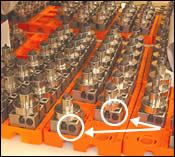
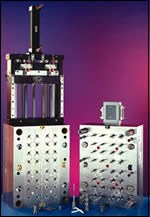
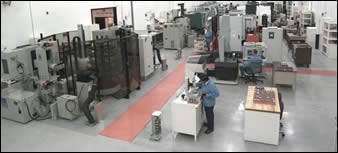

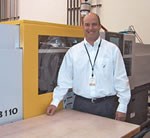















.jpg;maxWidth=300;quality=90)

.jpg;maxWidth=300;quality=90)





